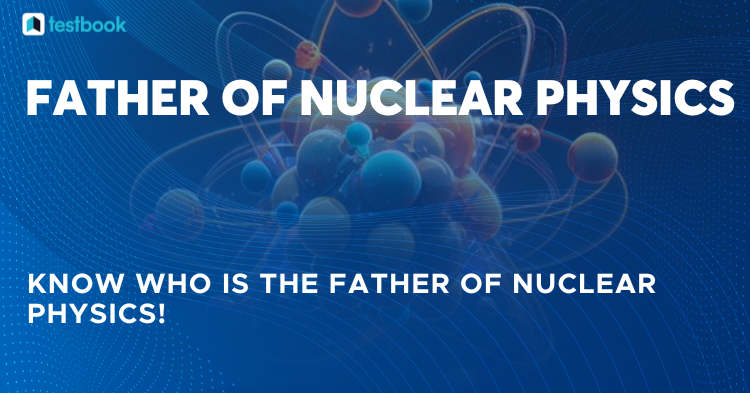The quest to understand the atomic nucleus has captivated scientists for generations. Among the luminaries of this domain, one figure stands distinctly illuminated: Ernest Rutherford, widely regarded as the “Father of Nuclear Physics.” His groundbreaking research fundamentally altered the scientific landscape, establishing the foundation for contemporary nuclear physics. This article meticulously explores Rutherford’s life, seminal experiments, and enduring legacy that continues to influence both theoretical and applied nuclear science.
Born in 1871 in the small village of Brightwater, New Zealand, Rutherford exhibited remarkable intellect from a young age. He pursued higher education at the University of New Zealand, where he attained his Bachelor of Arts degree. His early academic endeavors culminated in a scholarship to the University of Cambridge, leading to a profound transformation in his understanding of atomic structure. A pivotal moment in Rutherford’s academic journey was his collaboration with J.J. Thomson, the physicist who discovered the electron. This association provided Rutherford with a robust empirical foundation upon which he would build his pioneering hypotheses.
Rutherford’s most illustrious contributions began with the formulation of the nuclear model of the atom in 1911. Before this paradigm shift, the prevailing plum pudding model posited that atoms were composed of a diffuse cloud of positive charge speckled with negatively charged electrons. However, through meticulous experimentation, particularly his famous gold foil experiment, Rutherford demonstrated that atoms consist predominantly of empty space, with a dense core—the nucleus—surrounded by orbiting electrons. This revelation not only contradicted earlier models but also laid the groundwork for the modern atomic theory.
The gold foil experiment is a hallmark of Rutherford’s career and serves as an archetype of experimental physics. In this experiment, alpha particles emitted from a radioactive source were directed toward a thin sheet of gold foil. The unexpected deflection of a small fraction of these particles indicated the presence of a compact, positively charged nucleus. This nucleus was later identified as comprising protons, fundamentally altering the understanding of atomic structure and leading to further inquiries into nuclear composition.
As the story of atomic exploration unfolded, Rutherford’s discovery of the nucleus was complemented by his identification of the proton as a constituent particle. This advancement propelled scientific discourse into a new era, fostering research that sought to uncover the underlying forces governing subatomic interactions. Rutherford posited that the proton was the only particle in the nucleus, a claim that would subsequently be refined with the discovery of the neutron by James Chadwick, a protégé of Rutherford’s.
In addition to his theoretical contributions, Rutherford’s practical achievements played an invaluable role in the nascent field of nuclear physics. He pioneered techniques for ionizing gases and studied radioactivity, leading to the distinction between alpha, beta, and gamma radiation. His work elucidated the relationship between these different forms of radiation and their interactions with matter, fundamentally enhancing the comprehension of nuclear reactions.
Rutherford’s influence extended beyond his own research; he mentored a generation of physicists, instilling in them the rigorous experimental methodologies that characterized his work. Notably, his students contributed significantly to the advancement of nuclear science, with many going on to explore the burgeoning field of quantum mechanics and further unravel its mysterious complexities. The Royal Society recognized his contributions to science, awarding him several accolades, including the Copley Medal in 1920.
The impact of Rutherford’s findings transcended academic boundaries and laid the foundation for a plethora of technological advancements. The principles derived from his work in nuclear physics undergirded developments in both medicine and energy. The harnessing of nuclear fission, a direct offspring of Rutherfordian principles, catalyzed the production of nuclear energy, which now plays a pivotal role in addressing the world’s energy demands. Furthermore, Rutherford’s contributions to radiotherapy have revolutionized the treatment of various malignancies, showcasing the multifaceted applications of his research.
Rutherford’s legacy endures, manifesting in modern research avenues ranging from particle physics to cosmology. His insights into atomic structure have paved the way for scientific inquiries that delve into the fundamental forces of nature and the quest for a unified theory encompassing all physical phenomena. Researchers continue to build upon his discoveries, employing sophisticated technologies to investigate the characteristics of subatomic particles, including advancements in collider experiments that probe the very fabric of matter.
However, the reverberations of Rutherford’s work are not confined purely to the realms of physics and technology; they raise ethical considerations paramount in discussions surrounding nuclear energy and weaponry. The duality of nuclear discovery—its potential for both societal benefit and detriment—has catalyzed ongoing debates about the regulation and stewardship of nuclear technology. Such dialogues are essential as humanity navigates the complexities posed by energy crises and the environmental challenges associated with nuclear waste management.
In conclusion, Ernest Rutherford’s legacy as the Father of Nuclear Physics is indelibly etched in the annals of scientific history. His transformative ideas and empirical methodologies redefined the understanding of atomic structure, fostering a rich landscape for subsequent research and innovation. As the scientific community continues to grapple with the implications of his work, it is evident that Rutherford’s contributions will resonate for generations, inspiring future physicists to delve deeper into the enigmatic world of the atom and beyond.












